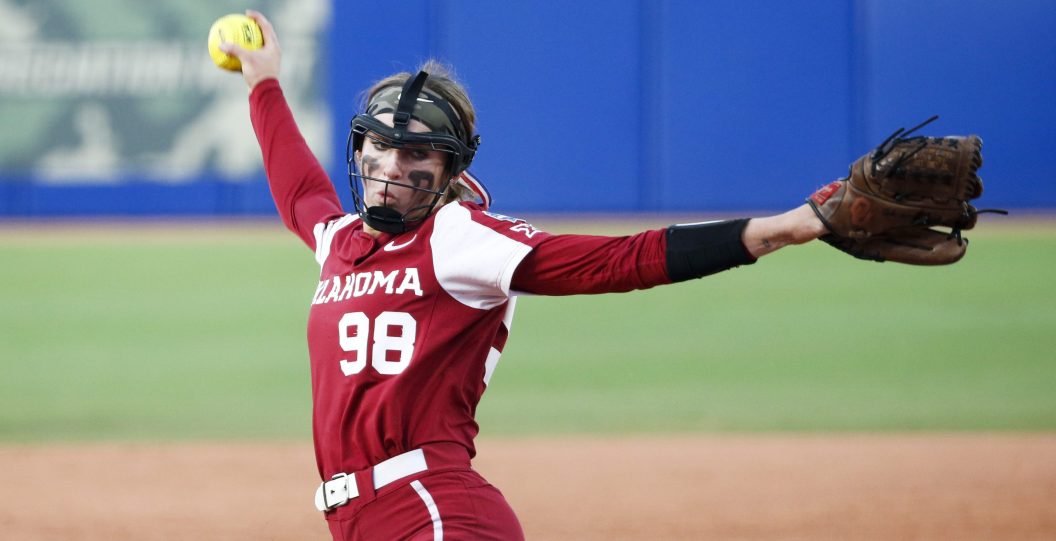The NCAA has announced a number of rule changes that will alter the way college softball is played.
Perhaps the most interesting of the rule changes — all of which go into effect next season — is that softball pitchers can now disengage from the playing surface with both feet during their delivery. In the past, pitchers had to keep their drag foot touching the playing surface throughout their pitch.
This rule doesn't mean that a pitcher can replant and push off a second time, shortening their distance toward home plate. That's still illegal. It means that they can elect to go airborne — which is a natural tendency that many youth softball pitchers do but have had to eliminate from their delivery. In fact, pitchers going airborne briefly was still common in college softball before this rule change but was rarely called.
This new rule is getting mixed reviews from the college softball community. Amanda Scarborough, an ESPN personality and Texas A&M college softball legend, tweeted this in response to the rule:
Dear young pitchers,
Just because you CAN doesn?t mean you SHOULD.
Meaning?.just because drag foot can be in the air, doesn?t mean you should go out and practice to get in the air.
This going to be such a fine line for years to come and a new battle for youth pitching. https://t.co/06E6E4cmtr
— Amanda Scarborough (@ascarborough) June 17, 2023
Scarborough's tweet signals why this change marks a big shift in college softball. While going airborne might be advantageous for adding velocity, pitchers who adapt their delivery to do so may pose risks to their arm health. The new rule could also pave a way for innovation and excitement, as rule changes often do.
Another new rule deals with obstruction on the bases. The rule deems it an obstruction if the defensive player — if they don't have the ball — either blocks any part of the bases/home plate, or blocks the runner from running. But defensive players will not be called for obstruction if they have the ball.
Video review is also being expanded. Review can now be used to check whether a runner left a base too early on tag-up plays, if they missed a base, or if they left a base too early before a pitch. All home runs will be reviewed, as well as all hit by pitches and every questionable catch/no catch.
Lastly, the time between when the next pitch must be thrown has been reduced from 25 seconds to 20 seconds. Improving pace of play is the name of the game right now.
According to the NCAA website, here are the rest of the approved rule changes:
- Allowing the use of a double first base on the field.
- Requiring the fence distance in left and right fields to be 200 feet for new construction.
- Removing the quarter-inch bat knob protrusion requirement to allow for a tapered/flared/cone bat handle.
- Prohibiting assistant coaches from leaving the dugout or bullpen area to appeal, question or argue any play on the field.
- Allowing one-way communication devices to be used during play.
- Allowing the pitcher to throw to any base one time during warmups.
- Allowing a postgame review of ejections that include a suspension.
All of these rule changes show the NCAA's commitment to evolve and improve college softball. While some of these rules have received pushback, the general consensus has been mostly positive.
Surely, none of these new rules will slow down the Oklahoma Sooner softball team, which is seeking a four-peat next season.

